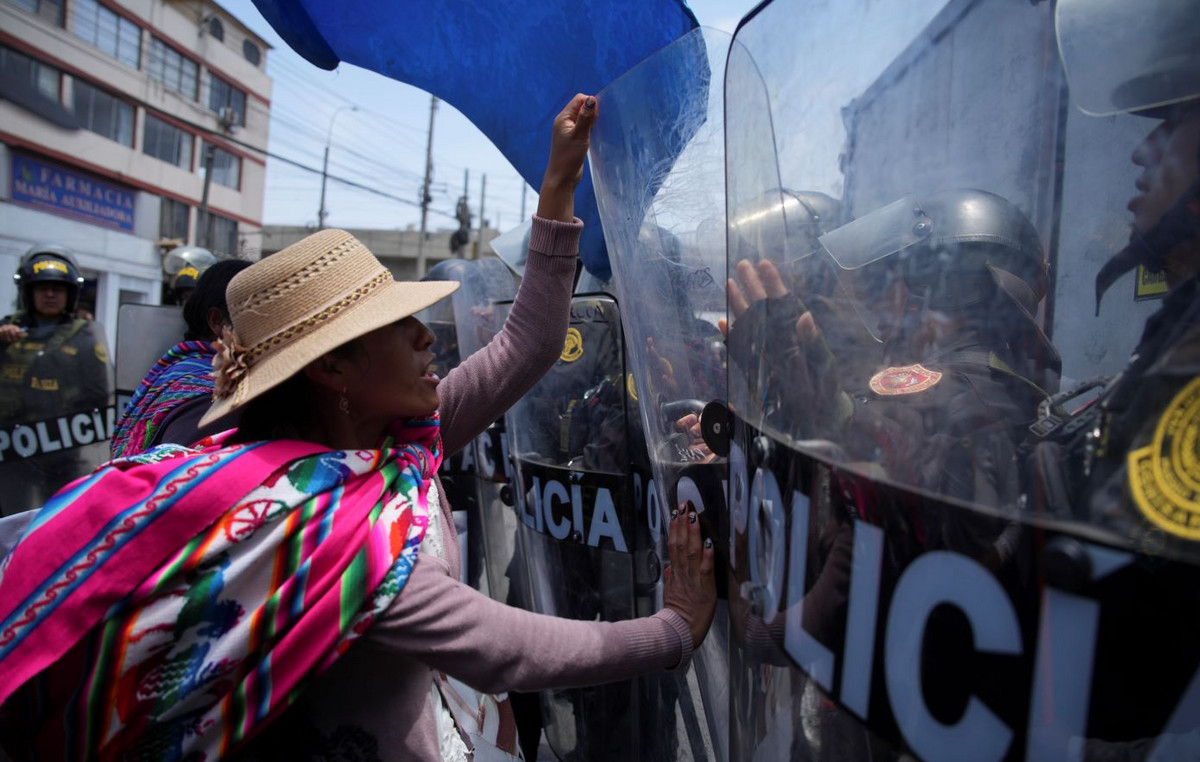Do you know the origin and destination of all the clothes you wear? Sustainable fashion is the area of this sector that is concerned with thinking about more socially and environmentally responsible solutions for the entire life cycle of a garment.
From then on, the large production of textile waste, damage to nature and the exploitation of cheap labor began to be seen as problems in this production.
Therefore, this philosophy arises, based on concepts such as slow fashion and eco-friendly.
But what does sustainable fashion mean? What are the benefits of sustainable fashion on the environment? And what are examples of this practice in everyday life? Understand the next topics.
What is sustainable fashion?
Sustainable fashion is a term used to describe an approach that takes into account the environmental, social and economic impact of the production of clothing, accessories and footwear.
Its aim is to minimize waste and pollution, as well as to promote ethical practices in the industry.
At the same time, sustainability in fashion also advocates that it be more durable and timeless, without encouraging excessive consumption of disposable clothing.
The proposal here is to encourage more conscious and responsible fashion, which values the quality, durability and timeless beauty of clothes. As a practice, then, it often includes several practices, for example:
- preference for recycled or organic materials;
- choosing more energy and water efficient manufacturing processes;
- adoption of fair trade practices for workers in the fashion industry.
People who defend this idea usually seek to consume companies and organizations that have these values within the production model.
When did it come about?
While not a year-specific event, this idea is not all that new: sustainable practices in this industry go back to the 1960s.
One of the major factors for this was the hippie movement, which defended the environment and the community and, as an effect of this, cleaner fashion and concerned with environmental and social aspects.
In the 2000s, new sustainability movements in fashion began to emerge as part of the development of sustainable fashion.
This debate gained strength from the 2010s onwards, when the negative impact of fast fashion and excessive clothing consumption became increasingly evident.
A great example of this was the episode of Rana Plaza collapse, in Bangladesh, in 2013. 1,135 people died. The building operated under illegal conditions and workers received low wages and lacked labor rights.
Since then, there has been a growing interest and awareness about the importance of sustainable fashion and conscious consumption — both for the planet and for the people who make the clothes.
How are raw materials chosen in sustainable fashion?

In sustainable fashion, the choice of raw materials is essential to ensure that the environmental and social impact of clothing production is minimized.
The choice of raw materials is based on several criteria, including the sustainability of the material itself, the way it is produced and the availability of the material.
For example, companies should opt for biodegradable fibers without the use of pesticides or other toxic products.
In addition, organic materials such as cotton, flax, hemp and silk, which are grown without the use of environmentally harmful pesticides and herbicides, are more suitable options.
The use of synthetic fabrics — such as polyester and viscose — requires a large amount of chemicals in the manufacture. Other choices, in relation to the raw material, that can also make sense in this type of fashion are:
- recycled materials : recycled polyester, which is made from recycled PET bottles, and recycled nylon, which is made from recycled fishing nets, might be more interesting;
- low impact materials : Tencel, made from reforested wood and is highly biodegradable, and modal, which is produced from certified wood pulp and is highly durable, are also alternatives with less abrasive effects on the environment.
What are the villains of the industry?
There are many villains in the fashion industry. Among some of the main ones, it stands out: waste of textile residues, exaggerated use of water resources and exploitation of cheap labor. Understand better below.
Tons of textile waste
Tons of textile waste are one of the main villains of the fashion industry. The overproduction of clothing and the rapid obsolescence of fashion has led to a significant increase in the amount of textile waste generated worldwide.
Old clothes, scraps and leather pieces make up the more than 4 million tons of textile waste discarded per year in Brazil, according to a survey by the Brazilian Association of Public Cleaning and Special Waste Companies (Abrelpe).
This textile waste can take decades or even centuries to decompose, or it can be incinerated, generating harmful emissions to the environment.
Irresponsible use of water resources
When evaluating the textile industry — beyond fashion —, the Ella Macarthur Foundation report, “A new textile economy: redesigning the future of fashion”, reveals that 93 billion cubic meters of water are produced annually.
That’s equivalent to 37 million Olympic-sized swimming pools.
That’s why the irresponsible use of water resources is also seen as one of the villains of the fashion industry.
The production of clothing and textiles requires large amounts of water, from growing plant fibers to washing and dyeing fabrics.
This excessive use of water resources can lead to water scarcity in areas where water is already limited, especially in developing countries.
In addition, the use of chemicals in the production of clothing and fabrics can contaminate water sources, harming water quality and aquatic life.
Exploitation of cheap labor
The production of clothing and accessories often involves hiring workers in developing countries, where wages are low and labor rights are limited.
These workers often work under poor conditions, including long hours, low wages, poor job security, and exposure to hazardous chemicals.
In some cases, these workers are also subjected to forms of forced labor, such as child labor and slave labor.
According to the 2018 Global Slavery Index, made available by walk free foundationfashion is the second sector that most exploits people.
In effect, this process contributes to the perpetuation of the cycle of poverty and inequality in many developing countries.
What is the impact of sustainable fashion on the environment?
Fashion and sustainability depend on people, communities and environments involved in the process being cared for and protected. But the benefits of sustainable fashion, specifically on the environment, are:
- less use of materials of animal origin;
- reduction of air, water and soil pollution;
- reduction of waste in the production process;
- less water consumption to produce a piece;
- reduction in the emission of polluting gases.
Examples of sustainable fashion

There are some examples of sustainable practices that help to better understand how fashion and sustainability work. See below.
eco fashion
Ecological fashion, or eco-friendly, focuses on minimizing the environmental impact of the production and consumption of clothing and accessories.
This includes the use of environmentally friendly raw materials, such as natural and recycled fibers, and the adoption of ecological production processes, such as the use of natural dyes and production processes with a low environmental impact.
While eco-fashion primarily focuses on minimizing environmental impact, sustainable fashion seeks to create a fashion system that is sustainable in all its dimensions, including environmental, economic and social.
vegan fashion
Vegan fashion is a type of fashion that focuses on using non-animal derived materials in its clothing and accessories. This means that vegan fashion avoids the use of leather, fur, silk, wool and other animal-derived materials.
Animal-derived raw materials are often obtained through cruel and unethical practices, such as the slaughter of animals for leather production or the use of silk from silkworm cocoons.
Therefore, it not only focuses on the materials used in clothing and accessories, but also includes choosing suppliers that adopt ethical and sustainable practices in all stages of production, from the collection of raw materials to distribution and sale.
slow fashion
To understand what slow fashion is, you need to understand what fast fashion is. “Fast fashion” is the rapid production and consumption of low-cost sustainable clothing.
This involves the use of cheap labor, low quality materials and mass production techniques in order to rapidly produce a high volume of clothing at low cost.
On the other hand, “slow fashion” or slow fashion is a sustainable alternative to fast fashion.
It prioritizes high quality materials, in addition to sustainable production processes that respect the environment and workers’ rights.
It also involves the production of fewer pieces at a higher cost and encourages people to buy only what they need and to prolong the life cycle of garments, through thrift stores, for example.
frequently asked questions
What is the concept of sustainable fashion?
Sustainable fashion is a concept that seeks to create a sustainable fashion system in all its dimensions, from environmental protection to economic and social inclusion.
It involves the use of sustainable materials and clothing, responsible production processes, and ethical suppliers.
What are the types of sustainable fashion?
Some examples where fashion and sustainability go together are ecological, vegan and slow fashion, also known as “slow fashion”.
How to make fashion sustainable?
Based on sustainable practices, such as:
- choice of ecological materials, such as natural and recycled fibers;
- adoption of responsible production processes, such as the use of natural dyes;
- preference for ethical suppliers that adopt conscientious practices in all stages of production, from responsible harvesting to the sale of sustainable clothing.
Source: CNN Brasil
I’m Robert Neff, a professional writer and editor. I specialize in the entertainment section, providing up-to-date coverage on the latest developments in film, television and music. My work has been featured on World Stock Market and other prominent publications.






